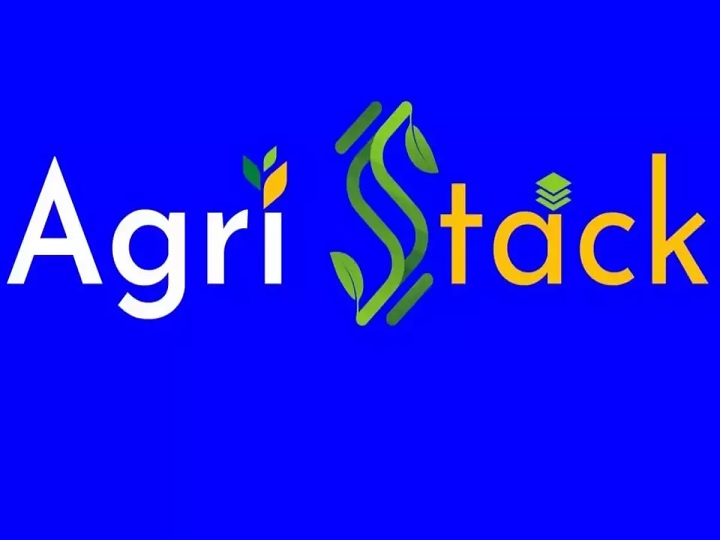
agristack
Agriculture has always been the backbone of economies around the world. As the global population continues to grow, the need for more efficient, sustainable farming practices becomes more urgent. In this context, Agristack has emerged as a game-changing concept. Agristack refers to the use of technology to gather, analyze, and share agricultural data for better decision-making and increased productivity. This digital transformation has the potential to revolutionize the agricultural sector, improving not only yield but also sustainability and resource management.
In this article, we will delve deep into what Agristack is, its components, benefits, challenges, and its future in shaping the future of farming.
Table of Contents
What is Agristack?
Agristack is a digital ecosystem that integrates various technologies to improve agricultural practices. The term combines “agriculture” and “stack,” referring to a stack of technologies used to collect, process, and analyze data from agricultural activities. Agristack typically includes data from farm sensors, satellites, weather stations, drones, and more. This data is then analyzed using artificial intelligence (AI), machine learning, and other tools to provide actionable insights for farmers and stakeholders in the agricultural value chain.
The concept aims to streamline agricultural operations by using a combination of IoT (Internet of Things) devices, big data analytics, cloud computing, and blockchain to provide real-time data and insights to farmers.
Key Components of Agristack
- Data Collection Technologies
- IoT Sensors: These devices are deployed across farms to collect real-time data on soil moisture, temperature, pH levels, and crop health. They provide valuable information to optimize irrigation, planting, and fertilization.
- Satellite Imaging: Satellites help monitor large agricultural landscapes, offering valuable data for precision agriculture. Images captured via satellites can be analyzed to assess crop health, detect diseases, and predict yield.
- Drones: Drones are used for aerial surveillance, crop monitoring, and delivering fertilizers or pesticides. They can cover large areas quickly, providing a bird’s-eye view of farm conditions.
- Data Analysis Tools
- Artificial Intelligence (AI): AI algorithms analyze massive amounts of data to predict crop yields, detect pest infestations, and recommend optimal planting and harvesting times.
- Machine Learning (ML): Machine learning models improve over time, learning from past data to provide more accurate insights and forecasts.
- Big Data: Large datasets collected from various sources are processed and analyzed to offer a holistic view of farm conditions and broader agricultural trends.
- Cloud Computing
- Cloud platforms store and process vast amounts of agricultural data, enabling farmers to access insights remotely. These platforms also ensure data security and allow farmers to track data in real time, making it easier to make informed decisions.
- Blockchain Technology
- Blockchain can be used to track the entire supply chain, from farm to market. This enhances transparency, accountability, and traceability, reducing fraud and ensuring fair prices for farmers.
Benefits of Agristack
Agristack brings numerous benefits to farmers, agricultural businesses, and even the environment. Some of the key advantages include:
1. Increased Crop Yield and Productivity
By utilizing data-driven insights, farmers can optimize their practices, resulting in higher yields with less effort. Agristack provides information on irrigation schedules, pest control, and fertilization, allowing for precise actions that lead to better results.
2. Resource Optimization
One of the main challenges in agriculture is the efficient use of resources like water, soil, and fertilizers. Agristack helps optimize the use of these resources by providing real-time data, enabling farmers to use them more efficiently and reduce waste.
3. Cost Reduction
By using technology to streamline operations, farmers can reduce operational costs. For instance, by automating irrigation or pest control, farmers can reduce the need for manual labor, chemicals, and water.
4. Sustainability and Environmental Protection
Agristack enables more sustainable farming practices by promoting precision agriculture. This means farmers can apply water, nutrients, and chemicals only where they are needed, reducing environmental impact and improving soil health over time.
5. Risk Management and Disaster Prevention
Through predictive analytics, Agristack can help farmers identify potential risks, such as droughts, floods, or pest infestations, before they happen. By acting proactively, farmers can mitigate losses and ensure better resilience against unforeseen events.
Challenges in Implementing Agristack
Despite its numerous advantages, the widespread adoption of Agristack faces several challenges:
1. High Initial Costs
The technology involved in Agristack can be expensive, particularly for small-scale farmers. The upfront costs of sensors, drones, and cloud computing infrastructure can be prohibitive, making it difficult for many farmers to adopt.
2. Data Privacy and Security Concerns
The large amount of data collected through Agristack raises concerns about privacy and security. Farmers may be reluctant to share sensitive information about their operations due to fear of data misuse or cyber-attacks.
3. Technology Gap in Rural Areas
Rural areas often lack the necessary infrastructure to support Agristack, including reliable internet access, technical expertise, and sufficient electricity. Bridging this gap is essential to ensuring the technology’s widespread use.
4. Integration of Different Technologies
Different components of Agristack, such as IoT devices, drones, and AI tools, may not always be compatible with each other. Integration of these technologies into a seamless system can be complex, requiring specialized knowledge and infrastructure.
5. Dependence on Data
While Agristack provides powerful data-driven insights, farmers must rely on accurate data to make informed decisions. Poor data quality, such as inaccurate sensor readings or outdated satellite images, can lead to incorrect recommendations.
Future of Agristack in Agriculture
The future of Agristack looks promising as technology continues to advance. Key developments to look forward to include:
1. Wider Adoption of AI and Machine Learning
As AI and machine learning algorithms continue to evolve, they will become more accurate, enabling more precise decision-making for farmers. These technologies will also help farmers identify trends, predict market conditions, and make better long-term decisions.
2. Smart Farming with Automation
Automation is expected to play a huge role in the future of Agristack. Robotic tractors, autonomous drones, and automated irrigation systems will help farmers reduce labor costs and improve efficiency. These innovations will make farming more scalable, even for smallholders.
3. Precision Livestock Farming
While much of Agristack has been focused on crop farming, future innovations will likely expand to livestock management. Sensors can monitor animal health, optimize feed intake, and track movement, improving productivity and welfare.
4. Blockchain for Transparency
Blockchain technology will continue to enhance the transparency and traceability of agricultural supply chains. As consumers demand more information about the origin of their food, Agristack will help provide this information, building trust and ensuring food safety.
5. Collaborations and Partnerships
Governments, private companies, and farmers will need to collaborate to make Agristack successful. Public-private partnerships can help overcome the financial and infrastructural barriers that many farmers face when adopting these technologies.
Conclusion
Agristack represents the future of agriculture, combining technology and data to make farming more efficient, sustainable, and resilient. While challenges remain in terms of costs, infrastructure, and data security, the potential benefits of Agristack are undeniable. By increasing crop yields, optimizing resources, and ensuring sustainability, Agristack has the power to transform the agricultural sector for generations to come. As the technology continues to evolve and become more accessible, it is clear that Agristack will play an essential role in feeding the world and safeguarding the environment.



